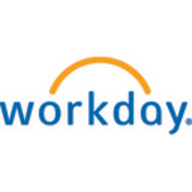

Teradata and Workday Prism Analytics compete in analytics and data management. Teradata appears to have the upper hand in scalability and advanced analytics, making it ideal for complex data environments, while Workday Prism Analytics shines in integrating with HR data, appealing to organizations focused on HR analytics.
Features: Teradata is known for its capability to handle large volumes of data, its robust analytics capabilities, and advanced data warehousing solutions. It also supports parallel processing and strong scalability, which are crucial for enterprise-level analytics. Workday Prism Analytics integrates HR and non-HR data seamlessly, allowing users to gain unified insights. It supports flexible data transformation and includes an intuitive user interface for easy operation.
Room for Improvement: Teradata could improve by simplifying its deployment process to better compete with cloud-based solutions. It might also enhance its ease of use for users without advanced technical skills. Finally, expanding support for a broader array of data sources could make it more versatile. Workday Prism Analytics may benefit from enhanced scalability features to accommodate larger datasets. Enhancements in data processing speed and expanded compatibility with external data sources could also be advantageous.
Ease of Deployment and Customer Service: Teradata follows a traditional deployment model with comprehensive customer support suited for complex enterprise environments. It requires significant setup efforts but provides detailed assistance for intricate deployments. In contrast, Workday Prism Analytics offers a quicker, cloud-based deployment supported by responsive customer service, streamlined for faster implementation.
Pricing and ROI: Teradata involves a substantial initial investment but can lead to high ROI for extensive data processing needs. Its pricing reflects its powerful capabilities. Workday Prism Analytics, with its economical cloud-based model, offers an attractive entry point, delivering quicker ROI, particularly for organizations centered around HR data analysis.


Teradata is a scalable data analytics platform designed to meet enterprise demands for large-scale data management and processing, focusing on performance, scalability, and security for complex query executions.
As a leading data warehousing solution, Teradata integrates advanced analytics enabling organizations to derive insights from massive datasets. It supports high-volume data workloads with its architecture optimized for analytical queries. Users benefit from its robust scalability, allowing seamless expansion as data grows. Teradata's SQL engine is compatible with a wide range of data types, ensuring flexibility in data analysis. With advanced security measures, it protects sensitive data across various environments, providing peace of mind to users handling critical information.
What are the most important features of Teradata?Teradata is widely used in industries like finance, telecommunications, and healthcare, where data-driven decisions are critical. Companies leverage its robust analytics capabilities to enhance customer experiences, streamline operations, and ensure compliance with regulatory requirements. In these sectors, quick access to data insights can significantly impact competitive advantage.
With Workday Prism Analytics, you can bring data in at scale from any source and prepare, analyze, and securely share it with your organization. The result? You gain all the insights you need to drive better business outcomes.
We monitor all BI (Business Intelligence) Tools reviews to prevent fraudulent reviews and keep review quality high. We do not post reviews by company employees or direct competitors. We validate each review for authenticity via cross-reference with LinkedIn, and personal follow-up with the reviewer when necessary.